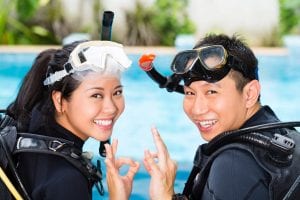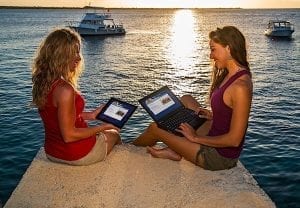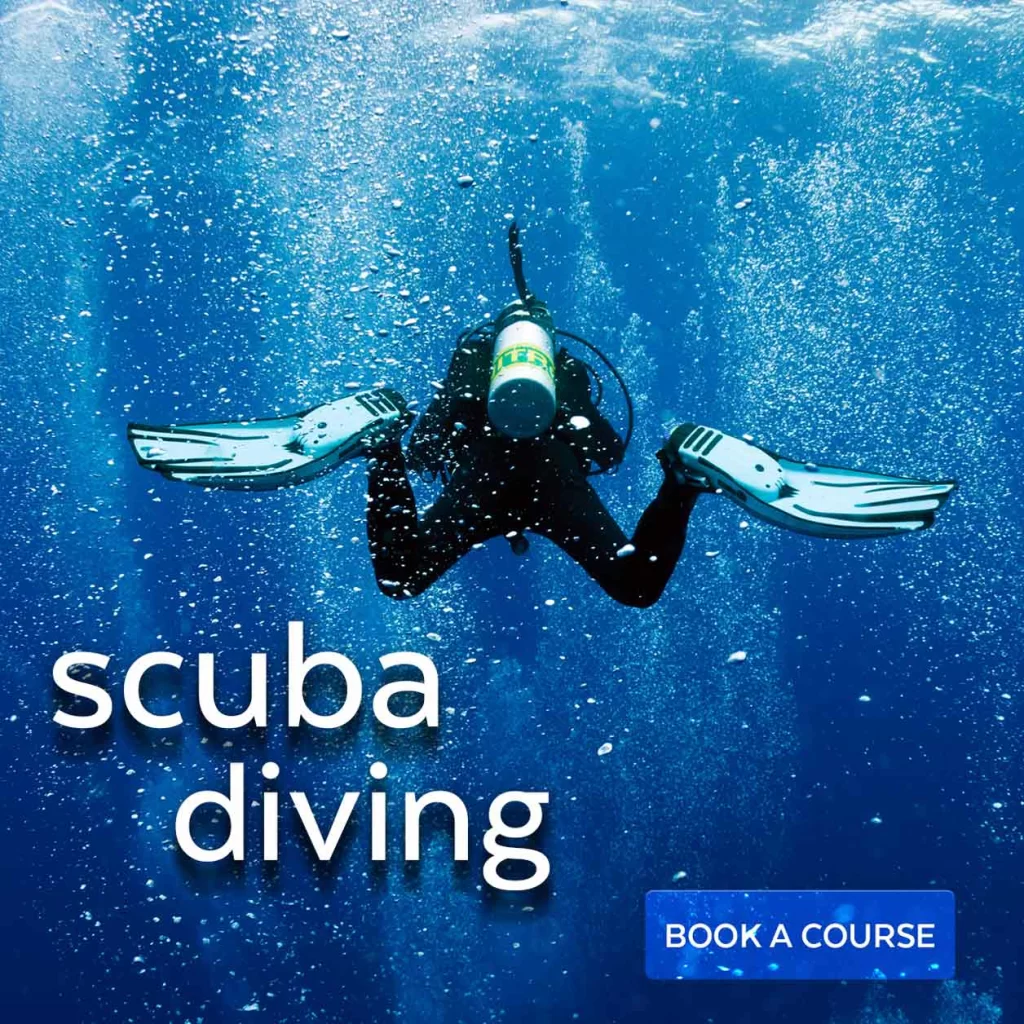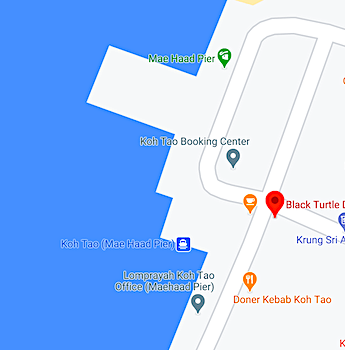Covid-19 and Scuba Diving
We have had to live with the COVID-19 virus for almost a year now and it has had a serious impact on all our lives.
It has changed the way we interact with each other, how we perform our work duties, how we spend our free time and many other normal day to day activities.
The virus transmits itself by two main ways. Firstly, the virus moves from infected to uninfected people through expiration from the infected person, especially when the person sneezes, coughs or talks.
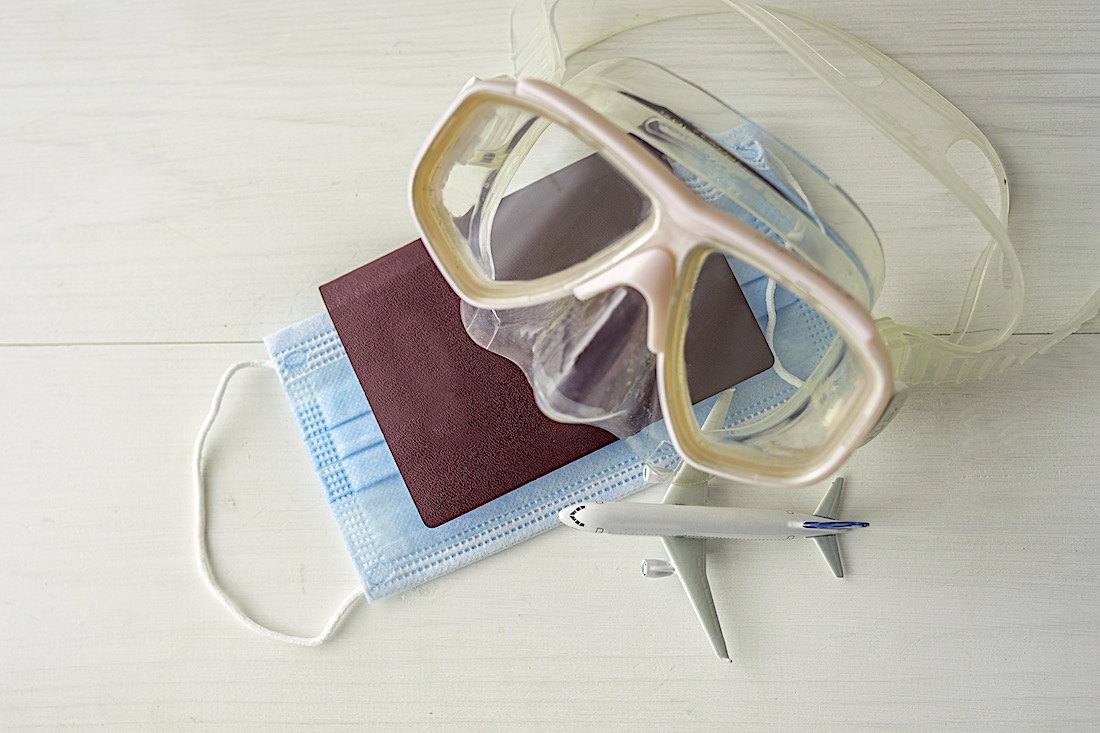
Information on Covid-19 when Scuba Diving
Small droplets pass through the air and can be inhaled causing a COVID-19 infection.
Secondly, there is transmission through contact with an infected area. This contact most commonly happens with your hands, after which you then touch your nose, mouth or eyes with those hands and that way you can acquire an infection.
Scuba diving is one of those leisurely activities, like many others, that is affected by this novel virus.
The good thing is that over the past months scientists have learned a great deal about the virus and transmission and because of this there are some easy to follow steps to reduce virus transmission in scuba diving.
Good Hand Hygiene in Scuba Diving
Always make sure to wash your hands with soap (minimum 20 seconds) or use alcohol-based disinfecting hand gel (recommended minimum 60% alcohol) before and after touching your dive equipment.
When setting up diving equipment or when getting ready for the dive, try avoiding touching another scuba divers gear.
During equipment setups, it is recommended not to breathe from the alternate air source anymore in order to test it, unless you are able to disinfect it straight after doing that.
To test it you can just push the purge on the alternate air source to see if it works properly.
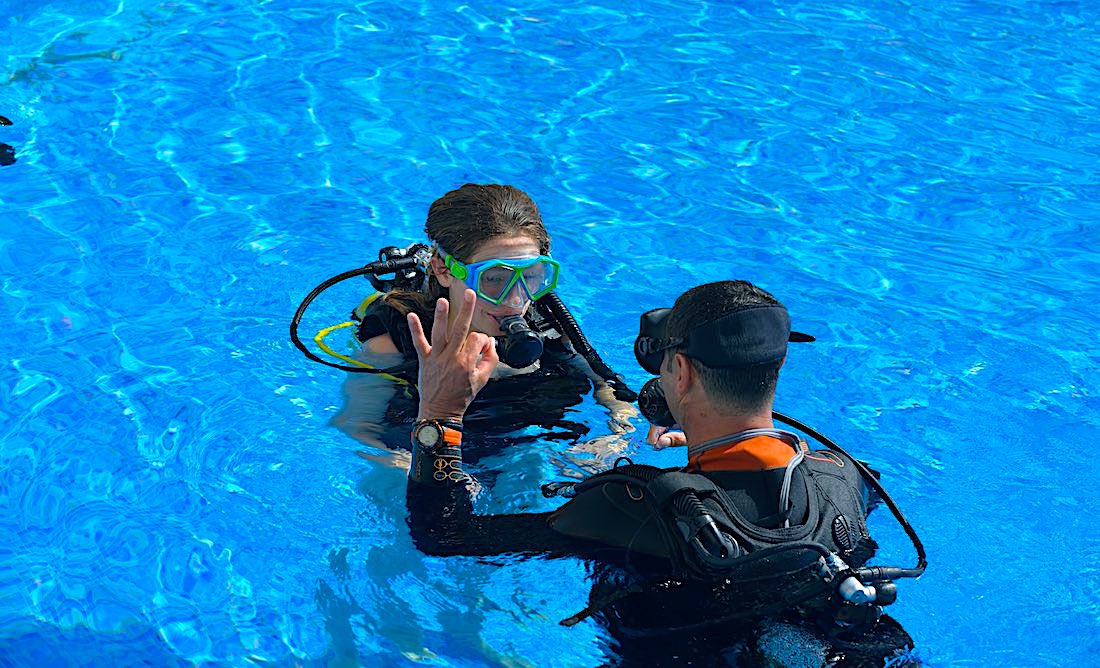
Keep Your Hands Clean
If you have taken a scuba diving course pre-COVID, you probably remember your dive instructor giving you lots of high-fives, handshakes or fist bumps to congratulate you on a job well done.
These were the traditional ways to let a student diver know they did well. Now, this has been replaced by hand signals and gestures under water or voice reinforcement at the surface.
Minimal hand contact helps to avoid the risk of disease transmission through contact.
Keep A Distance from other Divers
When in the water and all divers are in full dive gear, meaning wearing masks and regulators in place, transmission risk is very limited.
Even then, you still want to maintain a safe distance. When at the surface try to keep a minimum 1.5m distance from each other during skill practice.
Even with this distance, you will still be reachable within the 2-second guideline.
Another thing to consider when at the surface is the wind direction. Especially when performing skills like snorkel clearing, you do not want the exhaled air and droplets to blow in the direction of other divers.
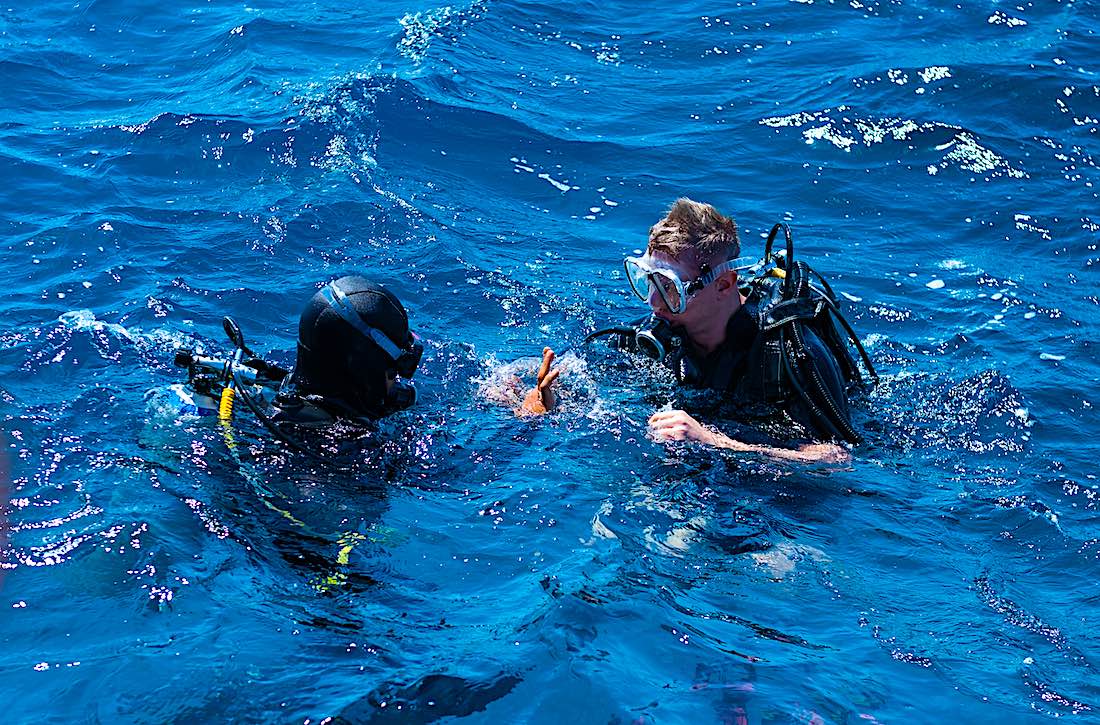
Keep A Safe Distance
After your dive, once you have returned to the surface, watch out with clearing mucus or other things from your face and nose and try avoiding spitting in the water when other people are nearby.
This has always been a commonly observed habit with scuba divers. Ideally keep your mask on and regulator in as much as possible, even when exiting the water.
When under water, social distancing is less important because every diver will be breathing from their own regulator and have their own masks on.
Not distancing under water is also important for control, safety and maintaining buddy contact. Having said this, you still want to avoid direct contact as much as possible.
Wearing a Facemask in Scuba Diving Activities
In common areas, such as classrooms, dive centre reception area or equipment room, wear a facemask as much as possible.
This is important because people can spread the virus even before knowing they are infected.
Ideally, you want to organize (diving) activities as much as possible outdoors. It is generally considered that disease transmission risk is less when outside, compared to being inside.
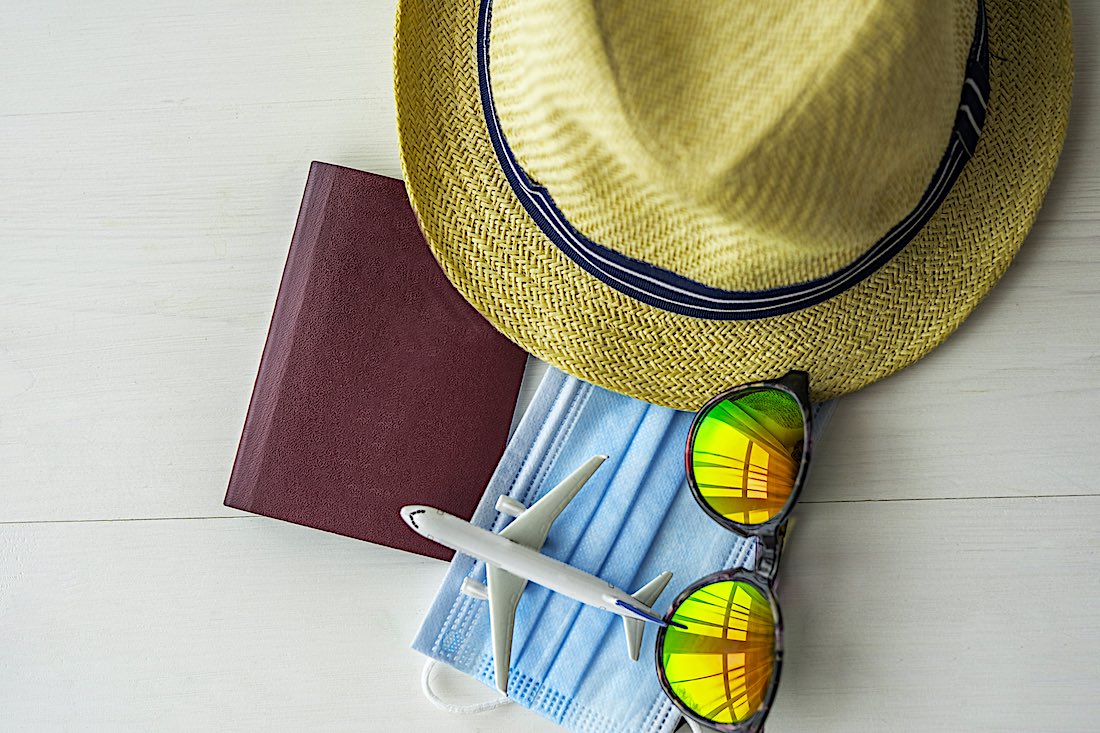
Proper Use of A Face Mask
We perform almost all of our knowledge development activities outside either on the terrace of the restaurant or in our open-air classroom, where we also have access to a TV to show videos.
Another way to minimize time in a classroom and maximize your time doing cool, fun scuba diving on Koh Tao, is by choosing the eLearning option.
By doing this all knowledge development can be completed before arrival and you will have more time to enjoy the diving part of the course.
With eLearning we provide all the materials and there is no extra charge. We encourage all our students to do eLearning as much as possible.
Disinfecting Scuba Diving Equipment
Dive equipment, such as regulators, masks and BCD’s need to be properly cleaned and disinfected after use and before storing.
Make sure disinfectants are used according to the manufacturer-recommended strength. All the equipment needs to be immersed in the solution and not just sprayed on.
Afterwards you rinse with fresh water before drying and storing them ready for the next use.
Our divers and student divers will use the same set of rental equipment for their entire stay with us.
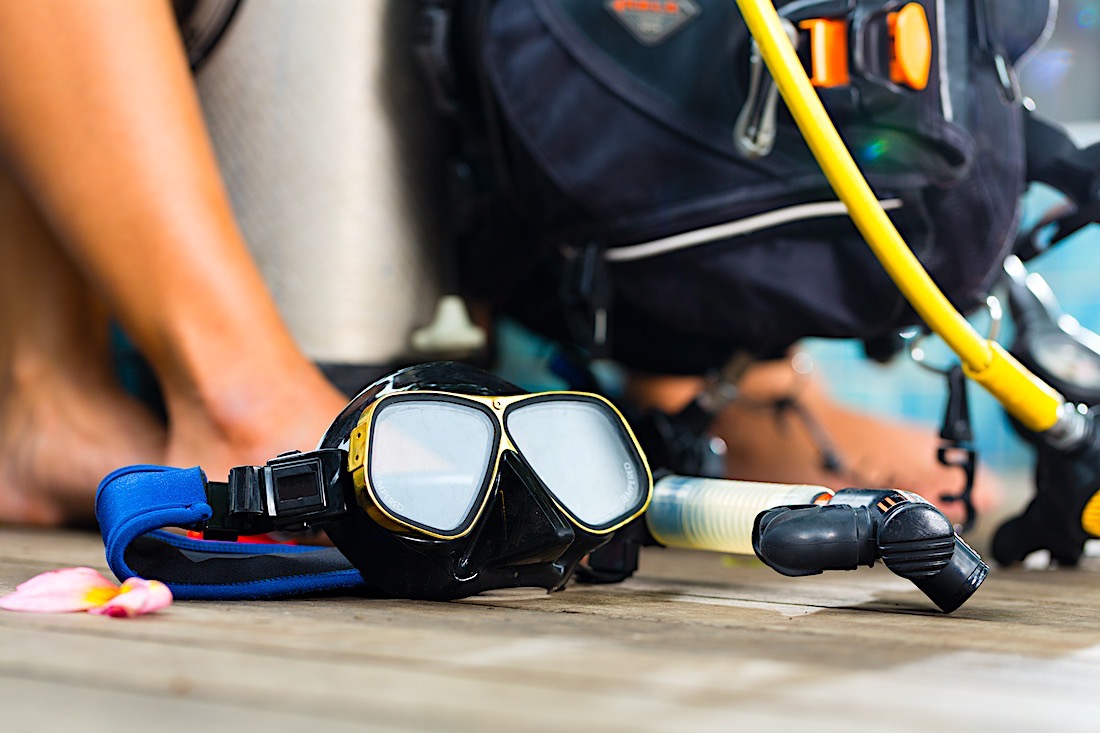
Washing Diving Equipment
Upon arrival we will get you the right equipment size and you will get a specific location where the equipment can be kept throughout your stay.
That way we avoid dive gear getting mixed up and used by other divers.
After every use, the diver will be in charge of cleaning and rinsing their own equipment.
Once you have finished your final diving activities we will make sure everything is cleaned and disinfected thoroughly before the next person gets to use it.
Preparing the Mask for Scuba Diving
When it comes to preparing the mask before the dive, we use anti-fog spray or a soapy solution to make sure the mask does not fog up during the dive.
You can clean the mask on the boat before entering the water and there is clean water available to rinse the mask.
Once cleaned the mask goes on the face and stays there the entire time that is spent on the surface before descending and ideally, until you return to the boat after the dive. The days of using your own spit as an anti-fog solution are over.
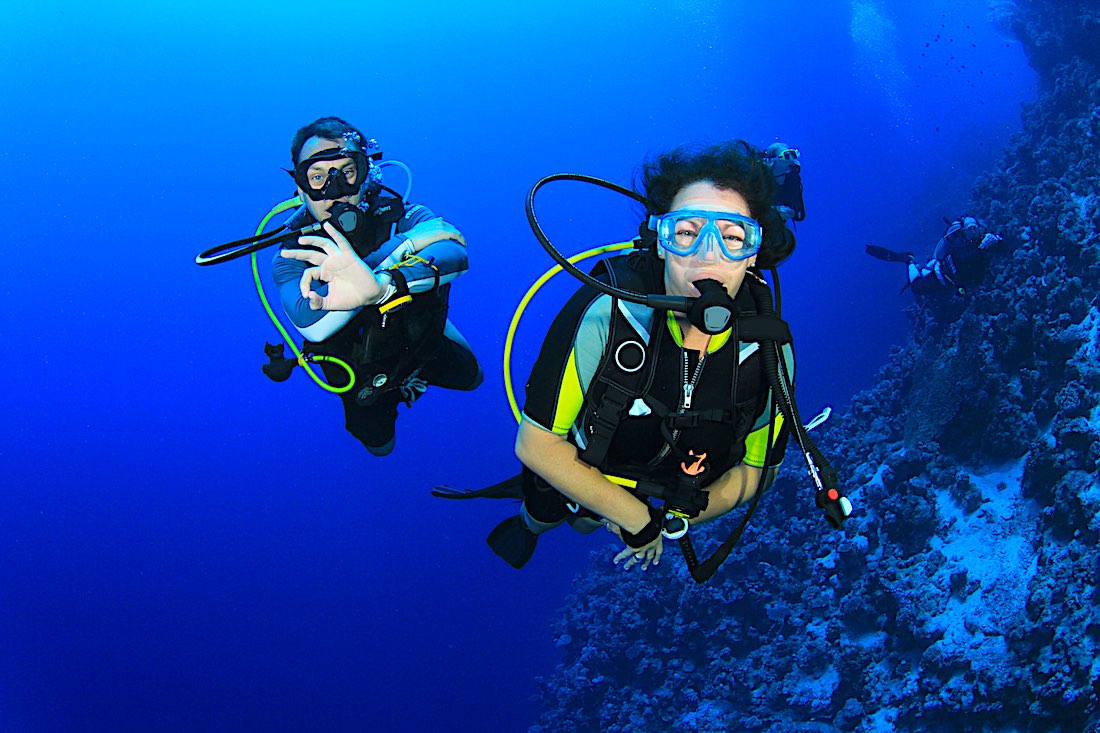
Buddy System in Scuba Diving
Scuba Diving is a sport you do not do alone (unless you have special training) and it relies heavily on the buddy system for safety, fun and practicality.
When you bring a dive buddy from your social bubble it will give you more leeway when it comes to social distancing and contact during your course or dives.
Our instructors will always buddy up people from the same family, couples or people that are already socially exposed to each other.
Diving with a Buddy
This does not mean you should not engage in any diving activities when visiting our island alone. You can still be part of a buddy team while remaining at a safe social distance.
To give an example, the pre-dive buddy check can be carried out visually and verbally at a safe distance from each other.
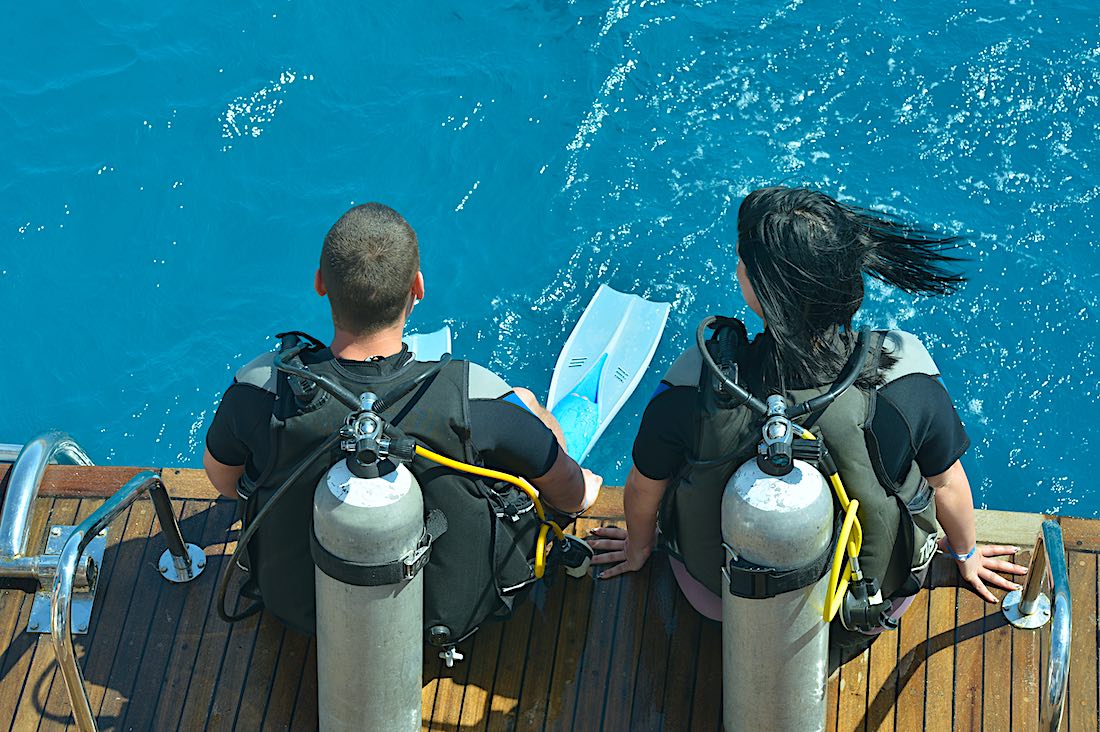
Scuba Diving Outdoor Activity
The good thing about scuba diving is that it is a sport that is mostly done outside, especially on Koh Tao.
On the island there are no indoor swimming pools for confined water training and even knowledge development sessions can be conducted outdoors because of the warm tropical climate.
All dive boats have open air spaces and are very well ventilated when heading out for a dive trip around the island.
The risk of virus transmission is much lower outside than inside because viruses that are released into the air can rapidly become diluted through the atmosphere.
When organizing diving activities outdoors in combination with appropriate social distancing, risk of disease transmission can be reduced to a minimum.
Do Not Dive If You Are Not Well
Probably one of the most important ways to avoid infection or pass on the virus is to not go diving (or travelling) when you are feeling ill or under the weather.
This is no different from any time in the past but is especially important now.
People who have or have been exposed to COVID-19 (or other communicable diseases), should avoid others until medical professionals advise there is no transmission risk.
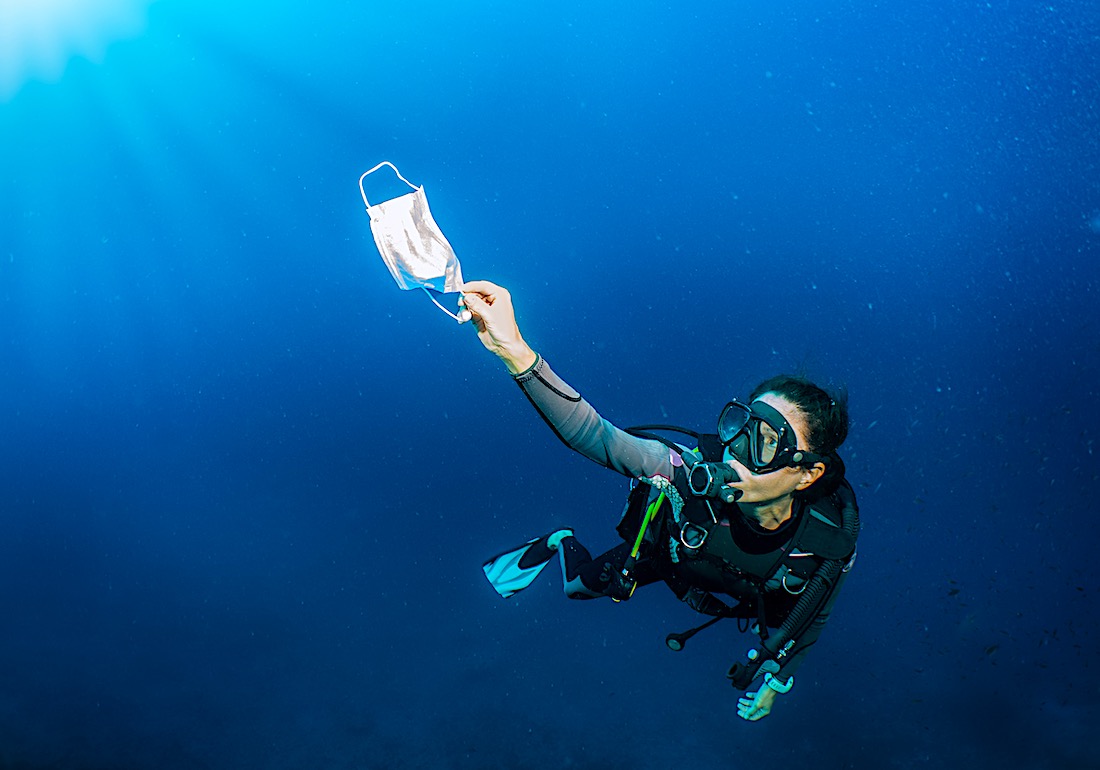
Scuba Diving Changes to Training Standards
In response to the current situation, PADI as a dive training organization has made some changes to the training standards and communicated those with their members around the world.
This means that there are a few skills from certain courses that are now conducted in a different way in order to reduce the risk of virus transmission.
Below we have listed some of the changes that have been made to PADI programs.
PADI Dive Course Change Information
PADI Open Water Diver Course
To reduce risk of disease transmission during alternate air source practice in the Open Water Course, the alternate air source is no longer tested by breathing from it before the dive, but just by pushing the purge button.
That way you can avoid contamination of the alternate air source until the moment it needs to be used for practice.
After skill practice, it needs to be disinfected properly before next use.
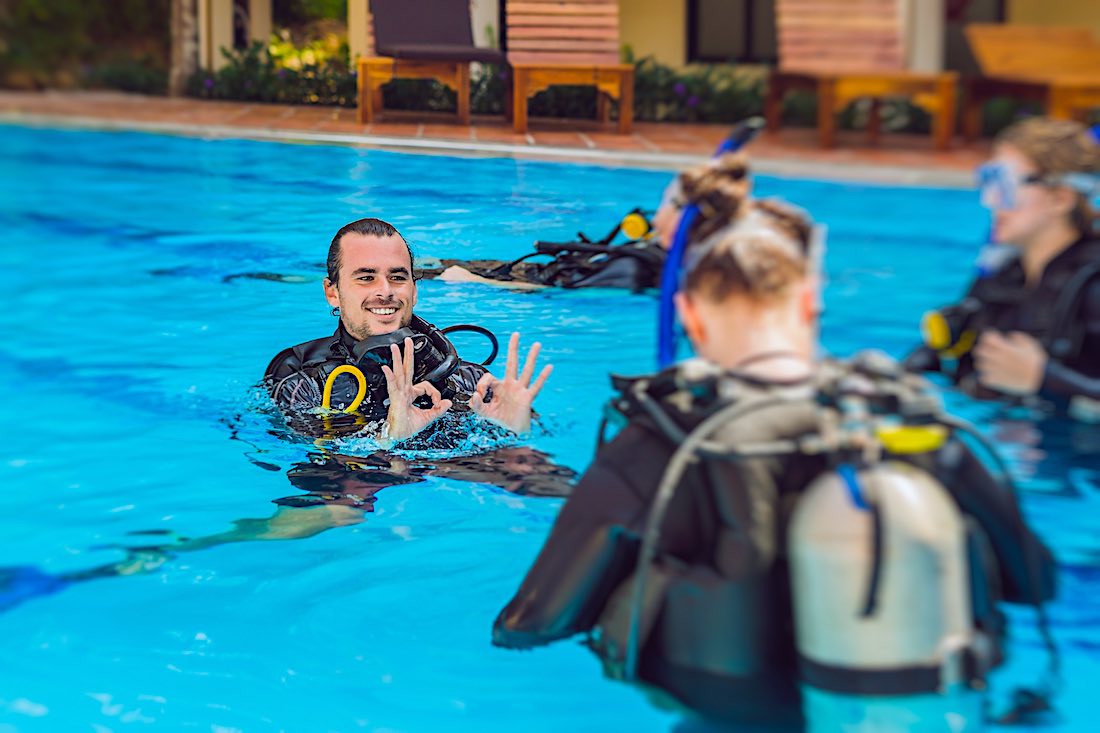
PADI Rescue Diver, Emergency Oxygen Provider & EFR Courses
In the PADI Rescue Diver course, when using a rescue breathing mask we ensure each diver has a mask (with valve) that is used on that diver during training.
The rescuer cannot make lip contact with the mask, and the valve is there to redirect the victim’s breath away from the rescuer.
After training, the mask and valve needs to be cleaned according to the manufacturer guidelines.
For the mouth-to-mouth rescue breathing method, rescuers use a rescue breathing mask on the victim but use mouth-to-mouth techniques such as (simulating) pinching the nose etc.
Another method is to use face shields that are commonly used with CPR mannequins during the exercise to avoid skin-to-skin contact.
Use of Rescue & Emergency Equipment
Lastly, the rescuer can simulate the required removing the diver’s mask step of the skill, but keep the victims diver mask in place so that the victims nose does not need to be touched directly.
When using oxygen kits for Rescue Diver training or in the Emergency Oxygen Provider course, make sure to disinfect oxygen masks with disinfection wipes between users.
After class, the mask and tubing needs to be cleaned according to the manufacturers recommendations.
The same goes for Emergency First Response training and the use of CPR mannequins. All contact surfaces need to be thoroughly disinfected in between different users.
Also, we make sure students have access to hand washing facilities and we provide liquid hand sanitizer.
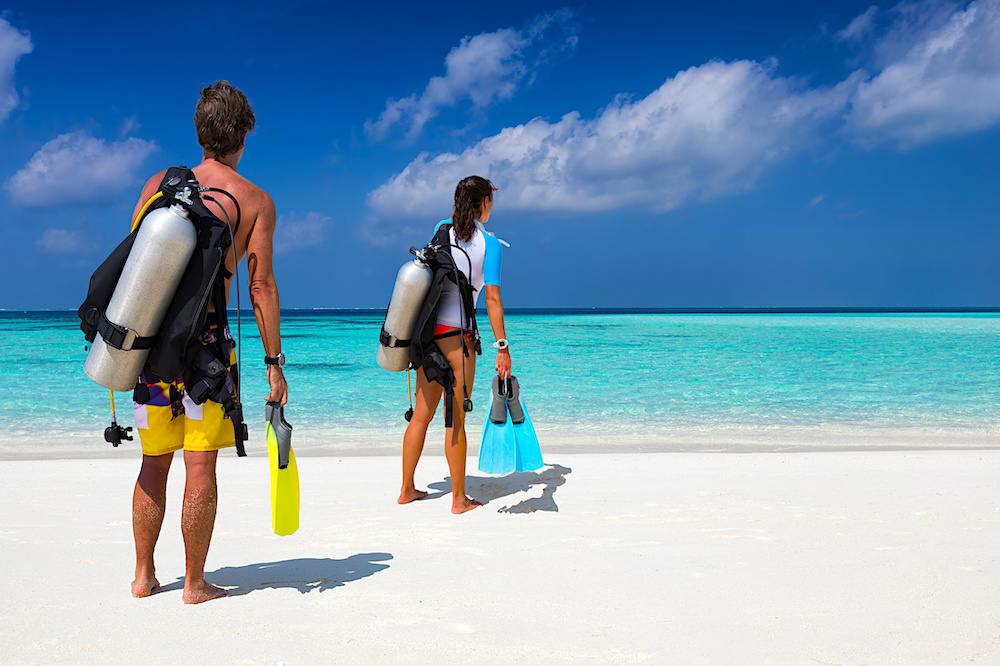
PADI Divemaster Course Koh Tao
In Exercise 5 – Equipment Exchange – in the PADI Divemaster course, candidates will no longer share one single regulator second stage when performing the exercise.
During the exchange, candidates will continue breathing from their own primary second stage.
Once the scuba unit has been exchanged, candidates will begin breathing from the buddy’s alternate air source for the remainder of the exercise, they will not use the buddy’s primary second stage.
Also, instead of exchanging masks, the candidate removes the mask, hands it to the buddy, gets it back and replaces their own mask.
The whole equipment exchange exercise has to be completed while neutrally buoyant to get a passing score.
E-Learning & Online Dive Courses
Certain segments of PADI courses and even entire courses can be taught via instructor-led online learning using video chat.
PADI has introduced this option due to the travel restrictions that are in place in many countries.
This allows instructors to teach knowledge development of all PADI courses via a video chat, even PADI videos can be shown this way.
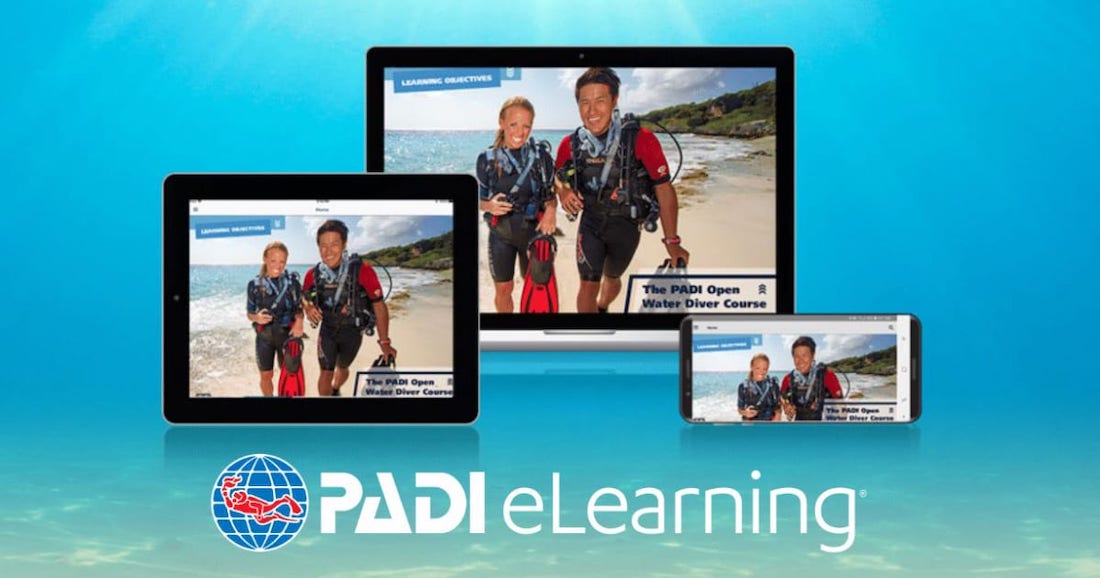
PADI Diving Courses Koh Tao Online Learning
There are 3 PADI Specialty courses that can be taught entirely online. It is the Enriched Air Specialty, Equipment Specialist and Project AWARE specialty.
The reason is that these courses do not require any dives in order to be certified, they can all be taught ‘dry’.
If you are aware that the Enriched Air Specialty (Nitrox course) is the most popular PADI Specialty in the world, this offers a great opportunity for divers to continue their education from home.
Even for Pro Level courses there are some options available. The PADI Divemaster course offers a great opportunity for instructor-led sessions, particularly in areas like dive theory.
For the Instructor Development Course (IDC) your Course Director can teach certain presentations from the IDC curriculum online via video chat.
Having Fun and Keeping safe
The year 2020 was extremely challenging for all of us in many different ways.
Hopefully the current situation will not put you off from taking a diving course or signing up for some fun dives.
By following some simple steps COVID-19 transmission risk when scuba diving can be reduced to a minimum and everyone can still enjoy their favorite sport in a safe way.
Many dive centres around the world have been heavily hit by the pandemic and now is the time to support your local dive shop more than ever.
